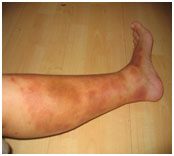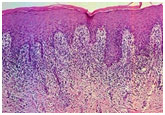|
|
||||||||||||||||||||||||||||||||||||
Disease Conditions
- Abscess
- Acne
- Addiction
- Adenoid Hypertrophy
- Allergic Rhinitis or Hay Fever
- Alopecia Areata
- Alzheimer’s Disease
- Amoebiasis
- Anxiety
- Asthma
- Backache
- Bed-Wetting-Enuresis
- Brain-Tumour
- Cataract
- Cirrhosis of Liver
- Conjunctivitis
- Constipation
- Dengue
- Depression
- Diabetes Mellitus
- Diseases of Prostate
- Eczema
- Epilepsy
- Erectile-Dysfunction
- Gallstones
- Goitre
- Gynaec
- Hepatitis
- Hepatitis-a
- Hepatitis-b
- Hepatitis-e
- Hyperthyroidism
- Hypothyroidism
- IBS - Irritable Bowel Syndrome
- Infertility
- Infertility FAQ
- Male Infertility
- Male Infertility FAQ
- Women Infertility
- Lichen Planus
- Lipoma
- Meningitis
- Menstrual-Disorders
- Migraine
- Molluscum-Contagiosum
- Nasal-Polyps
- Neoplasm
- Nephrotic Syndrome
- Neuralgia
- Osteo Arthritis
- Otitis
- Piles or Hemorrhoids
- Premature-Ejaculation
- Psoriasis
- Rheumatoid Arthritis
- Ringworm
- Schizophrenia
- Sinusitis
- Spondylitis
- Styes
- Tarsal Cyst-Chalazion
- Tonsilitis
- Typhoid
- Urinary-Tract-Infection
- Urticaria
- Vertigo
- Vitiligo
- Warts
Auroh Health Horoscope
Disease A - Z > Lichen Planus > Homeopathic treatment for Lichen Planus
Homeopathy treatment for Lichen Planus
|
||||||||
Lichen Planus (pronounced LY-kin-PLAN-us) is a common inflammatory disease of the skin and mouth. It affects about one to two percent of the general population. The name "lichen" refers to the lichen plant which grows on rocks or trees, and "planus" means flat.
LP is not an infectious disease. It is impossible to catch LP from someone or to give it to someone else. The disease is not a form of cancer, it does not appear to be inherited, and it is not related to nutrition. The medical field today finds little help for this chronic disease. Fortunately, homeopathy, the fast growing alternative medicine has a definite, promising treatment for Lichen Planus
Causes and Prevalence
Lichen Planus is an inflammatory disease that affects the skin, the mouth (oral), or both. It may also affect the genital skin. Skin affects are seen in men and women equally, but oral Lichen Planus affects women twice as often as men. The disease occurs most frequently in middle-aged adults. The cause of Lichen Planus is not known. While there are many theories to explain Lichen Planus, most dermatologists believe it can be classified as an autoimmune disease. This means that white blood cells which usually fight germs begin to attack the normal parts of the skin, mucous membranes, hair, and nails. There are cases of lichen planus-type rashes which occur as allergic reactions to medications for high blood pressure, heart disease, and arthritis. Identifying and stopping the drug helps clear up the condition within a few weeks. Some people with LichenPlanus can also have hepatitis C, and the dermatologist may check for it
Some drugs, such as those containing arsenic, bismuth, or gold can cause a reaction that is indistinguishable from the rash of lichen planus. Exposure to certain chemicals used in the development of color photographs can also produce a similar rash. The long-term use of the drugs quinacrine or guanidine (used for malaria, certain microscopic organisms, and worms) may produce hypertrophic lichen planus of the lower legs and other skin and body- wide (systemic) disturbances. Other unusual causes of lichen planus include liver disease and what is called graft-versus-host disease in people who have received a transplant
How is the rash of lichen planus different from that of most other common rashes ?
The major point of distinction of lichen planus from eczema, psoriasis, and other common rashes is its color -- lilac or violet. The textbooks call it "violaceous."
Lichen Planus of the skin is characterized by reddish-purple, flat-topped bumps that may be very itchy. Some may have a white lacy appearance called Wickham's Striae. They can be anywhere on the body, but seem to favor the inside of the wrists and ankles. The disease can also occur on the lower back, neck, legs, genitals, and in rare cases, the scalp and nails. Lichen Planus on the legs is usually much darker in appearance. There may be thick patches (hypertrophic LP) especially on the shins. Blisters are rare except in special cases called bullous Lichen Planus. While the typical appearance of Lichen Planus makes the disease somewhat easy to identify, a skin biopsy may be needed to confirm the diagnosis
 |
 |
 |
Lichen planus |
Psoriasis |
Eczema |
What are the symptoms of lichen planus ?
Lichen planus itches with an intensity that varies in different people from mild to severe.
The onset of lichen planus can be sudden or gradual. The first attack may last for weeks or months, and recurrences may happen for years. Children are not often affected by lichen planus. The bumps at first are 2 to 4 mm in diameter, with angular borders, and a violaceous color. At the onset of the disease, new bumps may appear at sites of minor skin injury, such as a superficial scratch. An excess of pigment (hyperpigmentation) may develop in the affected skin as the lesions persist. Rarely, a patchy scarring balding (alopecia) of the scalp occurs
Skin, Mouth, Nails, Scalp, Genitals
Lichen Planus largely affects skin. It may also affect mouth (oral Lichen planus), the scalp, nails, or the genitals. It could affect one of more of the said body parts. Is is not a rule that every patient with Lichen Planus will have all the said areas affected. In males it could affect the glans of penis and in females the vulva or vagina. It can be said that more areas affected, more difficult to treat. Also, experience says that the oral or genital Lichen Planus is more difficult to treat as compared to that on the skin
 |
 |
Normal skin |
Microscopic view of lichen |
Lichen Planus and Hepatitis
Some of the latest studies have shown a co-association of Lichen Planus with a rare variety of . It may be noted that the exact connection and causative link has not been established between the two entities. It may be noted that patients with Hepatitis C have some proneness to develop Lichen Planus; the reverse is not true
AUROH Homeopathy Treatment
All variants of Lichen Planus respond very well to homeopathic treatment. It can be said with confidence that Lichen Planus is curable using homeopathy. homeopathy offers excellent results in Lichen Planus of the skin, mouth and genitals
Why Homeopathy for Lichen Planus ?
Homeopathic medicines offer excellent relief for Lichen Planus. Homeopathic medications can relieve the irritation, itching, burning caused by the eruptions and provide effective relief without any side effects and its good for raising the immunity. homeopathy is of use in eradicating chronic relapsing conditions. Homoeopathy doesn’t treat the ‘disease in man’ but it treats the ‘man in disease’. Homoeopathy treats the cause of disease and the illness will disappear
homeopathy is strongly recommended for Lichen Planus
Read Lichen Planus Testimonial
| talk to our doctors right now |  |
|
| consult our experts | ||
 |
leave your number we will call you back |
|
| start auroh health treatment |
Your doctor is just a click away |
Treatment |










